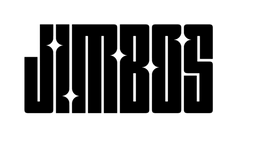How to Remove Stains and Waterlines from Boat Hulls
If your boat’s hull has yellow stains or a stubborn scum line, you’re not alone. These waterline marks are caused by minerals, algae, and oxidation that stick to the gel coat. In this guide, you’ll learn how to safely remove hull stains and waterlines — and how to prevent them from coming back.
Estimated Reading Time: ~9 minutes
Why Waterline Stains Form
Waterline stains are a mix of oxidation, algae, and mineral buildup that occur where your boat sits in the water. In saltwater regions like Florida, these marks appear faster due to higher mineral and salt content. The longer they sit, the more they bond with your gel coat — eventually leading to permanent discoloration.
- → Hard water minerals leave white chalky lines.
- → Organic scum from algae creates yellow or brown stains.
- → Salt and UV rays bake contaminants into the surface.
The Right Way to Remove Waterline Stains
Many boat owners make the mistake of scrubbing with abrasive brushes or harsh acids. This can dull the gel coat and cause etching. Instead, use a safe acid-based cleaner designed for marine use — like Pure Magic Cleaner — followed by polishing and sealing.
Step-by-Step Process:
-
Rinse the Hull
Use fresh water to remove loose debris and salt before cleaning. Work in shaded conditions if possible. -
Apply Pure Magic Cleaner
Spray or foam Pure Magic Cleaner directly onto the stains. Let it dwell for 30–60 seconds. You’ll see immediate brightening as it breaks down oxidation and scum. -
Agitate Gently
Use a soft boat brush or microfiber pad to loosen buildup. Avoid steel wool or abrasive pads that can scratch the gel coat. -
Rinse Thoroughly
Rinse from top to bottom until the surface is completely clean. For stubborn areas, repeat the process. -
Polish the Surface
Once the hull is clean, use Picture Perfect Polish to restore gloss and remove any haze. -
Seal with Ceramic Protection
Finish by applying Tough As Shell Ceramic Spray for long-term UV and salt protection.
Product Comparison: Hull Stain Removal Methods
| Method | Effectiveness | Safety for Gel Coat | Recommended Product |
|---|---|---|---|
| Household Cleaners | Low | Poor (can etch surface) | None |
| Harsh Acid Wash | High (but damaging) | Low | Not Recommended |
| Pure Magic + Polish + Ceramic | Excellent | High | Pure Magic Cleaner + Picture Perfect Polish + Tough As Shell |
Erase Hull Stains Fast
Pure Magic Cleaner removes oxidation, scum lines, and mineral stains in seconds — without damaging your gel coat.
Shop Pure Magic Cleaner Buy on AmazonHow to Prevent Waterline Stains in the Future
- → Rinse your hull after every outing — especially in saltwater.
- → Apply Tough As Shell Ceramic Spray once a month to create a slick, hydrophobic surface that repels scum.
- → Keep your boat on a lift or trailer when not in use to reduce staining.
- → Wash weekly with The Super Soaper to remove residue before it bakes in.
Keep Your Hull Looking Brand New
Use Pure Magic Cleaner to remove stains and Tough As Shell Ceramic Spray to lock in protection — the perfect combo for a spotless, glossy hull.
Shop Pure Magic Cleaner Shop Tough As Shell Buy on AmazonRelated Reading
- Restoring Faded Gel Coat: Professional Tips for a Mirror Finish
- The Complete Guide to Boat Hull Oxidation Removal
- The Right Way to Rinse Your Boat After Saltwater Use
- How to Foam Wash Your Boat Without Damaging the Gel Coat
- How to Prep Your Boat for Ceramic Coating
FAQs
What causes yellow stains on boat hulls?
Yellow or brown hull stains are usually caused by minerals, algae, and oxidation buildup at the waterline — especially in warm, nutrient-rich waters.
Is it safe to use acid to clean boat hulls?
Yes — when using a marine-safe formula like Pure Magic Cleaner. It’s designed to remove stains quickly without harming the gel coat.
Do I need to polish after cleaning?
Polishing with Picture Perfect Polish restores gloss and removes micro-haze left after deep cleaning, giving you that showroom shine.
How do I prevent new waterline stains?
Apply Tough As Shell Ceramic Spray monthly to make your hull hydrophobic — so water, salt, and grime rinse right off.
Can I use this method on aluminum boats?
Yes, but for best results use the aluminum pontoon cleaning method — it’s tailored for metal surfaces.



